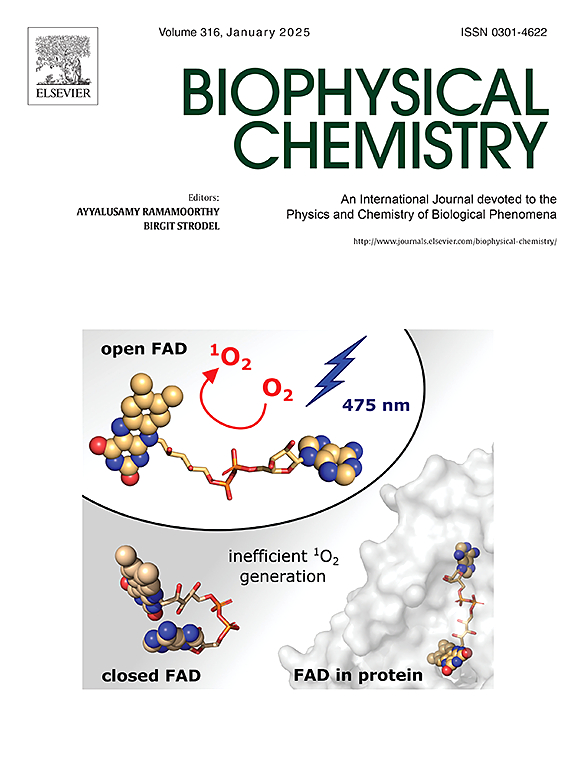Design of zwitterionic fluorescent polymers for membrane protein solubilization into native nanodiscs
IF 2.2
3区 生物学
Q2 BIOCHEMISTRY & MOLECULAR BIOLOGY
引用次数: 0
Abstract
Copolymers formed by non-alternating distributions of styrene and maleic acid monomers directly solubilize intact membranes into ∼10 nm discs. However, these copolymers are inherently polydisperse in terms of polymer structure, difficult to detect, prone to precipitation with divalent cations, and have limited working pH ranges due to their charges. The exposed polar sidechain of nanodisc-forming amphipathic copolymers provides a handle for integrating critical chemical features for facile solubilization, purification, detection, and resolution of diverse membrane protein complexes, including 7-transmembrane G-Protein-Coupled Receptor (GPCR) and beta-barrel proteins directly from cellular material. Here, we report that when derivatized with amine oxide (AO) moieties, alternating and intrinsically fluorescent derivatives of poly(styrene-alt-maleic anhydride) (SMAnh) spontaneously convert biological membranes into nanodiscs with diameters of 15–30 nm that can be resolved by dynamic light scattering and electron microscopy. Compared to non-alternating poly(styrene-co-maleic acid) (SMA), their fluorescence signals allow monitoring under diverse solution conditions, whether free or lipid bilayer-bound. These copolymers are useful in a broad pH range, are tolerant of high levels of divalent cations (>200 mM CaCl2) and are designed to reduce undesirable nonspecific interactions. The resulting nanodiscs can accommodate the PagP palmitoyltransferase expressed in Escherichia coli outer membranes and the human adenosine A2A receptor expressed into Pichia pastoris membranes, resulting in readily purified proteins that are less likely to be perturbed by polymer charge or hydrophobicity.

用于膜蛋白溶解的两性离子荧光聚合物的设计
苯乙烯和马来酸单体的非交替分布形成的共聚物直接将完整的膜溶解成约10 nm的圆盘。然而,就聚合物结构而言,这些共聚物本质上是多分散的,难以检测,容易与二价阳离子沉淀,并且由于它们的电荷而具有有限的工作pH范围。暴露的纳米盘状两亲共聚物的极性侧链为多种膜蛋白复合物(包括7-跨膜g蛋白偶联受体(GPCR)和直接来自细胞材料的β -桶蛋白)的快速溶解、纯化、检测和分离提供了关键的化学特性。在这里,我们报道了当与氧化胺(AO)部分衍生时,聚苯乙烯-马来酸酐(SMAnh)的交替和本质荧光衍生物自发地将生物膜转化为直径为15-30 nm的纳米片,可以通过动态光散射和电子显微镜分辨。与非交变聚苯乙烯-共马来酸(SMA)相比,它们的荧光信号可以在不同的溶液条件下进行监测,无论是游离的还是脂质双分子层结合的。这些共聚物适用于较宽的pH范围,可耐受高水平的二价阳离子(200 mM CaCl2),并可减少不良的非特异性相互作用。由此产生的纳米圆盘可以容纳大肠杆菌外膜中表达的PagP棕榈酰转移酶和毕赤酵母膜中表达的人腺苷A2A受体,从而产生易于纯化的蛋白质,这些蛋白质不太可能受到聚合物电荷或疏水性的干扰。
本文章由计算机程序翻译,如有差异,请以英文原文为准。
求助全文
约1分钟内获得全文
求助全文
来源期刊

Biophysical chemistry
生物-生化与分子生物学
CiteScore
6.10
自引率
10.50%
发文量
121
审稿时长
20 days
期刊介绍:
Biophysical Chemistry publishes original work and reviews in the areas of chemistry and physics directly impacting biological phenomena. Quantitative analysis of the properties of biological macromolecules, biologically active molecules, macromolecular assemblies and cell components in terms of kinetics, thermodynamics, spatio-temporal organization, NMR and X-ray structural biology, as well as single-molecule detection represent a major focus of the journal. Theoretical and computational treatments of biomacromolecular systems, macromolecular interactions, regulatory control and systems biology are also of interest to the journal.
 求助内容:
求助内容: 应助结果提醒方式:
应助结果提醒方式:


